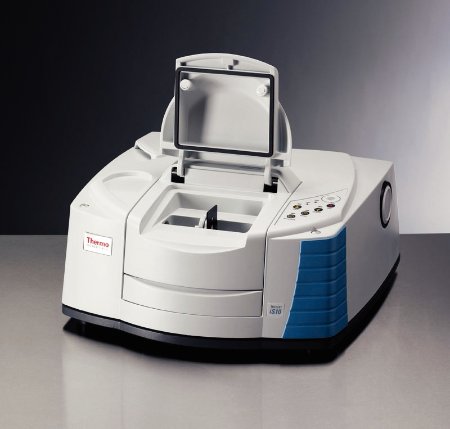Not every municipality currently offers drug checking services to residents. Drug checking programs operated in Canada have not been federally standardized, creating some variation between programs across the country. Two drug checking services offered in Canada, and the procedures and policies surrounding these operations, are outlined below; Toronto and Vancouver.
TORONTO
Toronto Drug Checking services were launched in October of 2019. This service is free, anonymous, and available to anyone. Currently, there are five different harm reduction facilities within Toronto where drug checking samples can be collected and supervised consumption services are available. These services are offered at the following locations:
- Parkdale Queen West Community Health Centre (Queen West site)
- South Riverdale Community Health Centre
- The Works at Toronto Public Health
- Moss Park Consumption and Treatment Service
- Parkdale Queen West Community Health Centre (Parkdale site)
Types of Samples Collected
~ 10 mg powders
~ 10 mg pills
~ 10 mg liquids
~ 10 mg blotters
leftover syringe liquids
used cookers/filters
Receiving Results
Once a sample is collected it is transported from the harm reduction facility to laboratories at either St. Michael Hospital or the Centre for Addiction and Mental Health.
All samples collected through Toronto Drug Checking services are analyzed using gas and/or liquid mass spectrometry detectors.
Results are made available to clients within two business days, either via phone or in person by the staff at harm reduction facilities.
VANCOUVER
Vancouver also offers anonymous drug checking services to its residents. Every overdose and supervised consumption site in Vancouver offers drug checking collection services. In addition to this, Vancouver Coastal Health also promotes the use of mail in drug checking through www.getyourgrugstested.com.
Fentanyl Test Strips
Unique to Vancouver, clients can access on-site Fentanyl testing strips at all overdose prevention and supervised consumption sites in the city. These test strips can also be obtained at various community health centres.
Each strip comes with an instructional sticker similar to the image below:

Fourier-Transform Infrared Spectrometer (FTIR)
Vancouver was the first Canadian city to use FTIR as a drug checking analytical methodology.
FTIR is a portable drug checking machine that provides greater access to drug checking services than standard spectrometry checking methods.
Compounds FTIR can test:
– opioids (such as heroin)
– stimulants (such as cocaine)
– psychoactives (such as MDMA)
Another benefit of FTIR is the ability for the machine to test for multiple compounds at once, run contrast to fentanyl strips that only test for one compound (fentanyl).
Using FTIR allows clients to receive results within minutes.

Safe Injection Site Policies
![An infographic saying "Saving lives. Changing lives. What influence has TOPS had on people who use the site? Provides a safe, clean & secure space. Clients are less worried of... overdosing, other people taking their drugs, getting caught using in public or in shelters. 'The staff just have big hearts. Even when I see them outside they help me. They are like a friend in my pocket!' [Data Source: Client Interview]. Staff are... warm, friendly, caring, non-judgmental, knowledgeable, skilled at de-escalation. Improves safer drug use practices. 74% of clients agreed that they have learned tips at the site to use drugs more safely. Increased knowledge of how to use drugs more safely. 72% of clients indicated that they are reusing gear less often since using the site. Increased access to free, clean gear. Reduced illness. 76% of clients reported injecting less in public spaces since using the site. Less public drug use and discarded gear. Builds relationships & connections. 95% of clients feel accepted at the site. Having someone trusted to talk to and who listens. Increased feelings of acceptance. Increased feelings of being valued and cared for. Increased sense of community and belonging. Not feeling judged, not feeling stigmatized. "I feel that I belong somewhere... I do not feel like an outcast. I walk in here and it's a family. For once in my life. I feel like I belong." [Data Source: Client Survey]. Having someone to talk to and who listens, increased feelings of acceptance, increased feelings of being valued and cared for, increased sense of community and belonging. Not feeling judged or stigmatized. TOPS Evaluation conducted Summer of 2018. Customer Satisfaction Surveys (n = 105), Client Interviews (n = 26), TOPS Staff/Lead (n = 17), Stakeholders (n = 9). For more information: health@mlhu.on.ca
Burreau De Sante De, Middlesex-London Health Unit, www.healthunit.com](https://safe-supply.uoguelph.ca/files/2020/12/tops-infographic-influence-662x1024.png)
Supervised injection services are a type of health service that provides a safe and hygienic environment for individuals to inject drugs under supervision of trained professionals. These sites are exempt under Section 56 of the Controlled Drug and Substances Act (CDSA), so people seeking these services do not have to worry about prosecution from the law.
Individuals are first assessed by staff to make sure they are eligible for this program. Once they are found eligible, there are precautionary measures taken:
- Person who already has drugs in their possession are assessed by the nurse and then taken into a separate room before administration of the drug.
- Staff will check for any alterations in the drug that can effect the strength.
- Client is given clean needle and will self administer the drug.
- Following administration, they are moved to a waiting room and monitored for any adverse reactions.
Individuals who use this service are also provided with more than just sterile injection supplies. These services also must provide:
- Education on safe injecting
- Prevention services
- Overdose intervention
- Referrals to drug treatment and rehabilitation
- Mental health and health services
- House services
- Needle exchange

British Colombia Ministry of Mental Health and Addictions. (2018). Services in Response to Overdose. Retrieved from: https://www.stopoverdose.gov.bc.ca/theweekly/overdose-prevention-sites-supervised-consumption-services-drug-checking
Centre on Drug Policy Evaluation. (2020). Toronto’s Drug Checking Service. Retrieved from: https://cdpe.org/project/drug-checking-services/
Gems-Inclusions. (2020). FTIR Spectroscopy. Retrieved from: https://www.gems-inclusions.com/inclusions-studies/analytical-methods/ftir-spectroscopy/
Supervised Injection Services. (2020). City of Toronto. Retrieved: https://www.toronto.ca/community-people/health-wellness-care/health-programs-advice/supervised-injection-services/
Temporary Overdose Prevention Site (TOPS). (2019). The Middlesex-London Health Unit. Retrieved: https://www.healthunit.com/temporary-overdose-prevention-site
Vancouver Coastal Health. (2020). Drug Checking. Retrieved from: http://www.vch.ca/public-health/harm-reduction/overdose-prevention-response/drug-checking


